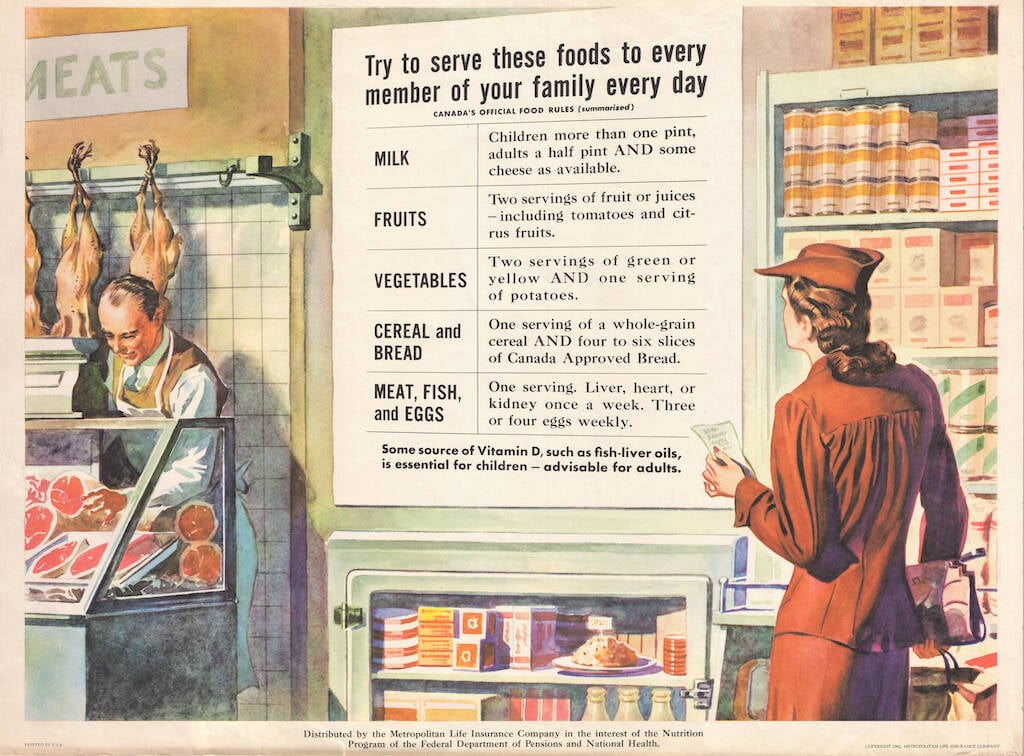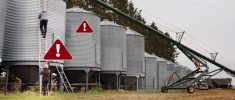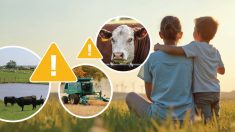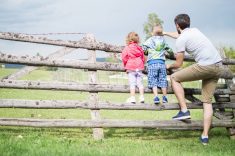Much work has been done around child safety on the farm, and the high incidence of injuries and deaths among Canadian farm children is well documented. But there hasn’t been much effort put into understanding why parents allow children into dangerous situations. A new study sheds some light on the reasons, and may help prevent accidents in future, said Valerie Elliot, a research assistant with the University of Saskatchewan.
She and colleagues from Ontario’s Queen’s University and the U.S.-based Marshfield Clinic Research Foundation published Towards a deeper understanding of parenting on the farm in the journal PLOS one last month. It conducted 11 in-depth interviews with Saskatchewan farm parents about how they decide if, when and how to bring their children into farm work environments.
Read Also

Canada’s ‘Harvest for Victory’ in the Second World War
Propaganda posters celebrating farming show the legacy of Canadian agriculture during the Second World War.
“It really does give us some meaningful insight into how they make those decisions,” Elliot said in an interview.
“Our hope moving forward is that this framework will contribute to future prevention strategies aimed at harm reduction, by considering both the perceived risks and benefits that play a role in farm parents’ decision-making.”
The two main findings are that parents, for the most part, know the hazards and risks the farm environment poses to that son or daughter’s safety. Their worries relate to kids being where supervision may be inadequate, or potentially exposing them to task-related dangers, or hazards simply from being around large moving equipment and machinery, livestock, grain, or chemicals.
But also weighing in a parent’s mind is the inherent value they also see in having their children present in some way in the farm workplace.
‘Builds character’
Benefits named by parents “were many and passionately described,” the study said, noting they include having kids gain a work ethic, develop specific skills, help out the family, learn to take pride in accomplishing something, and learn about agriculture in general. Plus placing kids in the farm workplace “builds character” and it’s good for physical health, the parents also told researchers.
Elliot said their responses shed important light on the trade-off between risks and benefits or rewards when including children in farm tasks, and improves understanding of what ultimately ‘tips the scale’ in their decisions. Many things also influence that process, including parents’ own knowledge and past experiences of the farm, or how they evaluate their children’s individual characteristics, she said.
This study should help farm safety professionals come up with new and better prevention strategies, said other researchers.
“There is a lot of evidence that children living on farms have very high risk of traumatic injury, but prevention efforts so far haven’t been very effective,” said Catherine Trask, associate professor at the Canadian Centre for Health and Safety in Agriculture at the University of Saskatchewan and Canada Research Chair in Ergonomics and Musculoskeletal Health.
“If we have a better understanding of how farm parents make these decisions, we’ll have a better chance of working together to find strategies that work.”
Little improvement
Rates of child injury and death on Canadians stubbornly persist and haven’t changed much despite best efforts of farm safety professionals to come up with prevention strategies.
Almost 250 children under 15 were killed in agricultural incidents between 1990 and 2009, according to the Canadian Agricultural Injury Report (CAIR). Although there has been a slight decline in deaths, the actual fatality rate of children, adjusted for population, has only been decreasing an average of 0.4 per cent a year.
Being struck or run over by a tractor, off-road vehicle, motor vehicle or a wagon or trailer are common occurrences, followed by drownings, machine rollovers, animal-related incidents or being caught or struck by objects.
Elliot said she certainly understands these tricky trade-offs farm parents face, having both grown up on a farm and raised her own children there. The study’s goal is to come up with ways that generate more buy-in from the farm community with future injury-prevention strategies, she said.
“Working together is a critical part of this process,” she said. “This is a first step to working together and including the parents’ voices.”
The study was funded by a Canadian Institutes of Health Research operating grant and done as part of a larger study looking at farm injuries in Saskatchewan.
















